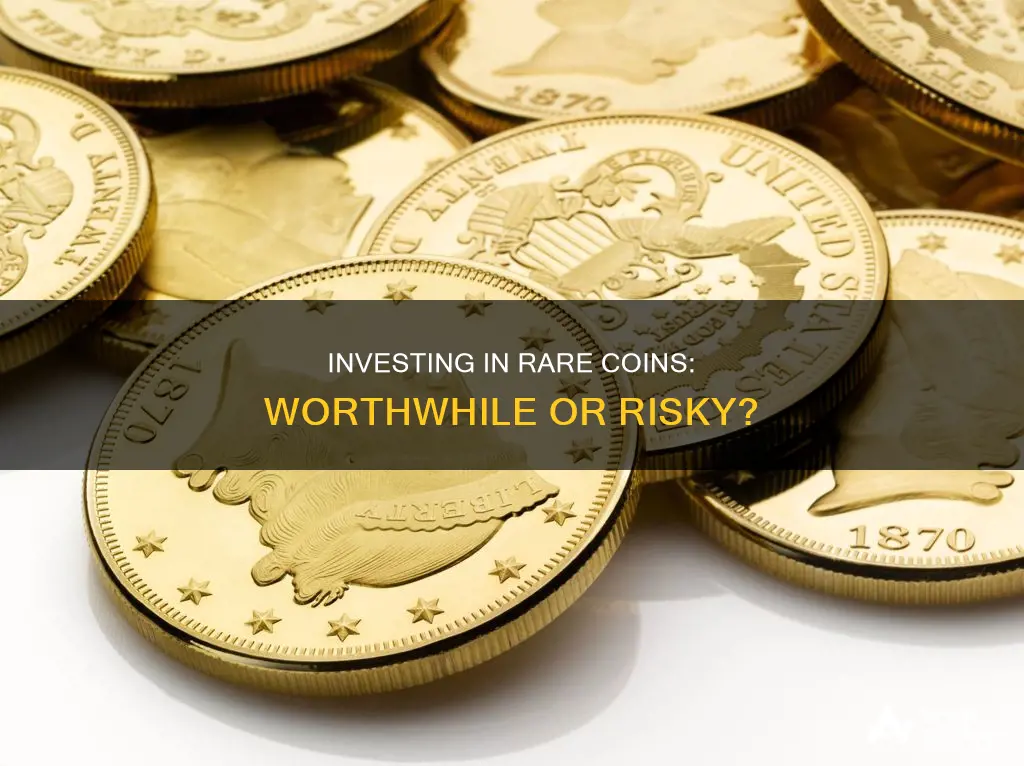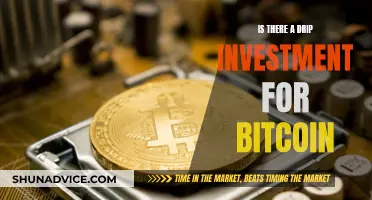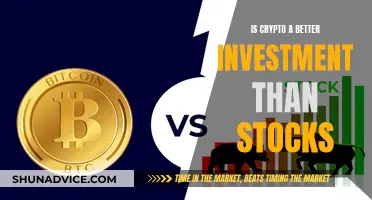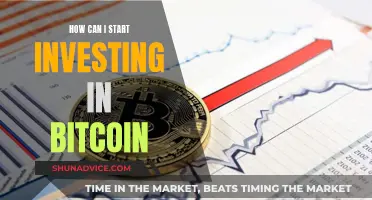
Investing in rare coins can be a profitable and rewarding venture, but it's important to understand the market and the risks involved. Rare coins have been a popular investment choice for centuries, offering a tangible asset with historical and cultural significance. They can provide a store of wealth, a hedge against inflation, and a way to diversify an investment portfolio beyond stocks and bonds. The value of rare coins is influenced by factors such as rarity, condition, historical significance, and market demand, and their prices can fluctuate over time. While investing in rare coins may not be ideal for short-term profits, it can offer significant long-term gains for those with a patient outlook.
| Characteristics | Values |
|---|---|
| Type of Investment | Tangible asset |
| Profitability | Can be profitable for long-term investing |
| Market Fluctuations | Can be volatile |
| Risk | Not ideal for short-term profits |
| Portfolio Diversification | Can add diversity to a portfolio |
| Returns | Potential for high returns |
| Historical Significance | Often have historical significance |
| Rarity | The rarer the coin, the more valuable |
| Condition | The better the condition, the more valuable |
| Market Demand | High demand can increase value |
| Storage | Requires secure storage |
What You'll Learn

Rare coins as a hedge against economic uncertainty
Rare coins have been a popular investment for centuries, especially in times of economic uncertainty. They are a tangible asset, offering a sense of security and stability compared to stocks and shares. Rare coins can be a good way to diversify an investment portfolio, and many financial advisors recommend that investors have 10-20% of their portfolio in hard assets like precious metals and rare coins.
Rare coins have a low correlation to other investments, so their value does not move in tandem with the stock market. This makes them an ideal way to reduce risk. They also have the potential for high returns, especially over the long term, as their value can increase significantly over time. For example, some rare coins appreciated in value by over 1000% between 1976 and 1989.
The value of rare coins is influenced by several factors, including their rarity, condition, historical significance, and demand in the market. The fewer coins minted and the better the condition, the more valuable the coin. Coins with historical significance, such as those minted during significant events in history, are also often worth more.
Investing in rare coins does come with risks, however. The market can be volatile, and prices fluctuate based on demand, economic conditions, and market sentiment. It is also a less liquid investment, meaning it may be challenging to sell coins quickly if needed. Investors must also consider the costs of storing and insuring their collection.
To maximise the potential of rare coin investments, it is important to conduct thorough research, build a balanced portfolio of different types of rare coins, and work with reputable and knowledgeable dealers to avoid counterfeit coins.
Bitcoin or XTP: Where Should You Invest Your Money?
You may want to see also

The potential for high returns
Investing in rare coins can be a profitable venture, with the potential for high returns. Rare coins have historically offered significant profit potential, with prices of elite coins appreciating by more than 1000% from 1976 to 1980 and 600% from 1982 to 1989.
- Rarity: The scarcity of a coin is a significant determinant of its value. The fewer coins minted or the fewer remaining in existence, the higher the price they can command at auction.
- Condition: The state of preservation of a rare coin significantly impacts its worth. Coins in pristine condition, with no signs of wear or damage, generally attract higher prices than those that have been circulated or damaged.
- Historical Significance: Coins minted during significant historical events or featuring notable figures can be more valuable due to their unique appeal to collectors. For instance, a coin minted during a pivotal moment in history may be worth more than one from a less notable period.
- Market Demand: The value of rare coins is influenced by collector demand. When demand for a particular coin is high, its price tends to soar, whereas low demand may lead to a decrease in value. Economic conditions, market volatility, and collector trends can all impact the demand for rare coins.
- Precious Metal Content: The intrinsic value of the metals in a coin, such as gold or silver, contributes to its overall worth. Coins with higher precious metal content tend to be more valuable, especially during economic downturns or when metal prices rise.
By understanding and carefully considering these factors, investors can make strategic decisions when investing in rare coins, maximizing their potential for high returns.
Bitcoin's Volatile Nature: Why You Should Still Invest
You may want to see also

The historical significance of rare coins
Rare coins are not only valuable because of their rarity but also because of their historical significance. Many rare coins are considered important pieces of history, commemorating significant events, people, and achievements.
The Brutus "Eid Mar" Denarius, minted in 42 BC, is one such example. This coin marks the assassination of Julius Caesar, with Brutus' portrait on the front and a pileus (cap of liberty) flanked by two daggers on the back. The daggers represent the weapons used in the assassination, with one dagger for Brutus and the other for his co-conspirator, Cassius. The pileus, or cap of liberty, symbolised the liberation of the Republic from a dictator. Less than 100 of these coins are known to have survived, making it one of the rarest and most significant coins.
Another example is the Athens Decadrachm, minted between 460-430 BC. This coin was struck to commemorate the victory of an alliance of free Greeks over the Persians, which included famous battles such as the Battle of Thermopylae and the Battle of Marathon. The front of the coin depicts Athena, the city god of Athens, while the back depicts an owl, her symbol.
The Titus Colosseum Sestertius, minted in 81-82 AD, is one of the earliest depictions of the Colosseum. It features a bust of Titus on the front and a depiction of the Colosseum on the back. Only 10 of these coins are known to exist.
The 1804 Silver Dollar, also known as the "King of American Coins", is an important piece of American history. It was minted in the early 19th century and is one of the rarest and most valuable coins in the world. Similarly, the 1787 Fugio Centennial, designed by Benjamin Franklin, is considered the United States' first official coin.
Rare coins also provide a tangible link to the past, offering a glimpse into the artistic and technical achievements of numismatics. The Naxos Tetradrachm, minted in 460 BC, is an excellent example of the fine details and execution of ancient Greek coin-making. The Gold Stater of Croesus, minted in 550 BC, is the first pure gold coin ever minted, solving the problem of varying gold and silver content in the naturally occurring alloy, Electrum.
In addition to their historical significance, rare coins have also proven to be a sound investment, offering significant profit potential over time. However, it is important to note that investing in rare coins should be done carefully, as there are potential downsides, such as the time it takes to earn profits and the risk of counterfeit or altered coins.
Buffett's Bitcoin: The Oracle's Crypto Investment Strategy
You may want to see also

Factors affecting the value of rare coins
Rare coins are a unique investment option, offering a glimpse into the past and a potential store of wealth. Several factors influence the value of these coins, and understanding these elements is crucial for investors. Here are the key factors affecting the value of rare coins:
Rarity and Mintage Numbers
The rarity of a coin is a significant determinant of its value. The fewer coins minted or the fewer that remain in existence, the higher the coin's value is likely to be. Low mintage numbers indicate scarcity, making these coins more desirable and valuable.
Historical Significance
Coins with a strong connection to ancient civilizations, significant historical events, or important people tend to be rarer and more sought-after. Their historical significance makes them highly prized by collectors and investors.
Condition and Preservation
The condition of a rare coin is typically a more crucial factor in determining its value than its age. Coins in perfect or mint condition, with no signs of wear or damage, are worth more. Proper preservation and storage are essential to maintaining a coin's condition and value, and investors should handle them with care.
Market Demand
The level of demand among collectors and investors also affects a rare coin's value. As more people recognize the potential of investing in these coins, demand and prices rise. Early investors can benefit from this appreciation. Global economics, investor sentiment, and numismatic trends all play a role in coin prices.
Precious Metal Content
The intrinsic value of the metals in a coin, such as gold or silver, contributes to its overall value. Coins with higher precious metal content are often more valuable, especially during economic uncertainty or rising metal prices.
Minting Errors and Unique Features
Minting errors, unique designs, or limited editions can also increase a coin's value. These rare variations appeal to collectors, and coins with errors or unique features can fetch higher prices.
Supply and Demand Dynamics
The value of rare coins is also influenced by supply and demand dynamics. If demand increases while supply remains limited, the value of these coins can climb significantly.
These factors, including rarity, historical significance, condition, and market demand, collectively shape the value of rare coins. Investors should carefully consider these aspects to make informed decisions and maximize the potential returns of their rare coin investments.
Coinbase Stock: A Guide to Investing in the Crypto Exchange
You may want to see also

Tips for investing in rare coins
Research Before You Buy
Conduct thorough research to understand the market and the coins you are interested in. Study coin collecting books, attend coin shows, and seek advice from reputable dealers. Making informed decisions will help you avoid costly mistakes.
Buy From Reputable Dealers
When purchasing rare coins, buy from reputable dealers with a proven track record of honesty and integrity. Working with knowledgeable dealers can help you navigate the market and avoid fraudulent coins. You can find these dealers online or in person, but be sure to do your due diligence before any transactions.
Focus on Rarity and Condition
When investing in rare coins, rarity and condition are critical. Rare coins with high collector demand can command significant premiums. Coins in exceptional condition can fetch even higher prices. Focusing on these factors ensures your investment appreciates over time.
Diversify Your Collection
Diversification is crucial in any investment strategy, and rare coins are no exception. Diversifying your collection spreads risk and maximizes investment potential. Consider investing in different types of rare coins, such as ancient coins, commemorative coins, error coins, and bullion coins. Additionally, consider investing in graded coins, which have been professionally authenticated and graded for condition.
Store Your Coins Safely
Proper storage is vital to preserving the value of your rare coins. Store your coins in a cool, dry, and secure location, such as a safe or safety deposit box. Avoid handling your coins excessively, as this can cause damage and reduce their value. Invest in coin collecting supplies, such as protective sleeves and albums, to maintain optimal coin condition.
Stash and Dogecoin: A Beginner's Guide to Investing
You may want to see also
Frequently asked questions
It can be a good idea if you're looking to diversify your portfolio with tangible assets. Rare coins have the potential for high returns and are a hedge against market volatility and economic uncertainty. However, it's important to remember that investing in rare coins is a long-term strategy and may not be suitable for those seeking short-term profits.
Rare coins offer several benefits, including portfolio diversification, potential for high returns, a hedge against inflation, and historical and collectible value. They are also tangible assets, providing investors with a sense of security and stability.
The rare coin market can be volatile, and prices may fluctuate due to various factors such as demand, economic conditions, and market sentiment. There is also a risk of counterfeit coins, and rare coins may have limited liquidity, making it challenging to sell them quickly. Additionally, storage and insurance costs can be ongoing expenses for investors.
It's important to conduct thorough research and educate yourself about the rare coin market. Consider finding a mentor or connecting with experienced collectors who can guide you. Focus on buying rare coins with high collector demand and in exceptional condition. Always buy from reputable dealers and ensure the coins are graded and certified by trusted services.
There are various types of rare coins to consider, including ancient coins from Greece, Rome, and Egypt, which are valued for their historical significance and intricate designs. Medieval coins offer insight into the economic and political landscape of the Middle Ages. Gold and silver coins are popular investment options due to their intrinsic value. Commemorative coins celebrate significant events, while error coins feature unique mistakes, making them highly sought-after by collectors.







